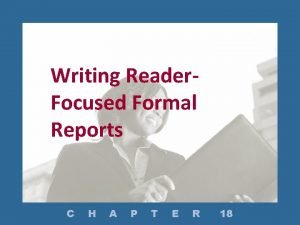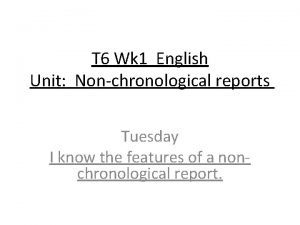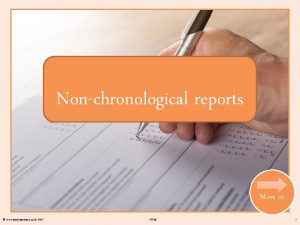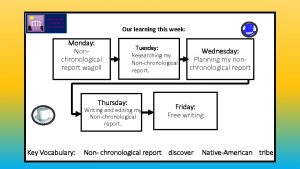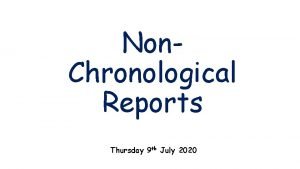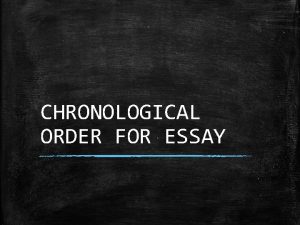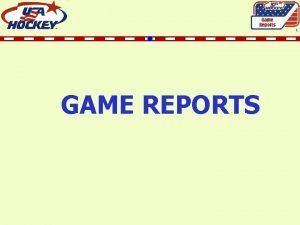Non Chronological Reports Thursday 9 th July 2020








- Slides: 8

Non. Chronological Reports Thursday 9 th July 2020

Warm-up Put the Power. Point in Slideshow and complete the next few warm –up slides.

Can you match the beginning of the sentences with the end using this paragraph from ‘The Sneagleonkey’ about diet? Feasting on both meat and vegetation, these creatures In addition, they have been known to be tempted to eat an occasional banana They make a peculiar rumbling nose when they eat Because they only hunt at night (nocturnal), and they do like nuts, which they crack open by bashing them against the tree bark. which is thought to be a signal to predators to keep away. Sneagleonkeys are rarely seen by human eyes. are omnivores and eat mainly arachnids, small reptiles and leaves.

Read the following paragraph about a Sneagleonkey’s diet and then complete the tasks below: Diet Feasting on both meat and vegetation, these creatures are omnivores and eat mainly arachnids, small reptiles and leaves. Their snake-like tongue catches prey in an instant! In addition, they have been known to be tempted to eat an occasional banana and they do like nuts, which they crack open by bashing them against the tree bark. They make a peculiar rumbling noise when they eat which is thought to be a signal to predators to keep away. Because they only hunt at night (nocturnal), Sneagleonkeys are rarely seen by human eyes but Scientists believe they are not dangerous to humans. 1. Can you unscramble the following technical vocabulary from the paragraph above: monvsoeir rpye ocrnlnuat egnttvoeai acrainshd omnivores prey nocturnal vegetation 2. Complete the expanded noun phrases: • reptiles small • their snake-like tongue • a peculiar, rumbling noise 3. The highlighted words: and, which, because, but, are all examples of what? • Fronted Adverbials • Conjunctions • Expanded Noun Phrases arachnids

Today’s Task … Is to finish writing your non-chronological report about your chosen fictional animal. In today’s lesson you will write: • Your paragraph about their Diet = what they mainly eat, what they sometimes eat, how they catch and eat their food, any habits they have whilst eating, when they hunt (time of day) etc. • A concluding paragraph which summarises your report – see example on separate sheet. • If you would like to, you could include a picture of your animal together with a caption.

Take your time and think carefully about what to write. Use the example of ‘The Sneagleonkey’ and when writing try and include some of the criteria from the table below: Try to include Example Headings and subheadings Diet; What do _____ like to eat? ; What are the eating habits of a ____? Conclusion Expanded Noun Phrases Small reptiles……… snake-like tongue…. sharp, razor-like claws Technical Vocabulary Omnivore, carnivore, herbivore, prey, predators, hunt, meat, vegetation, nocturnal, conclude, summarise Conjunctions Challenge: Different sentence starters including fronted adverbials In addition, Furthermore, When hunting, Feasting on, Scientists believe, To conclude, In conclusion, It is clear to see,

Vocabulary you could use… The Sneagleonkey example, conclusion example, the criteria and vocabulary help can also be found on a separate sheet on the website

Remember … Just try your best
 Gcc july 2020
Gcc july 2020 How do informational reports and analytical reports differ
How do informational reports and analytical reports differ Sue palmer non chronological report book
Sue palmer non chronological report book Non chronological report on panda
Non chronological report on panda What does non chronological report mean
What does non chronological report mean Ancient egypt non chronological report
Ancient egypt non chronological report Wagoll non chronological report
Wagoll non chronological report Different types of recounts
Different types of recounts Non chronological report conclusion
Non chronological report conclusion

